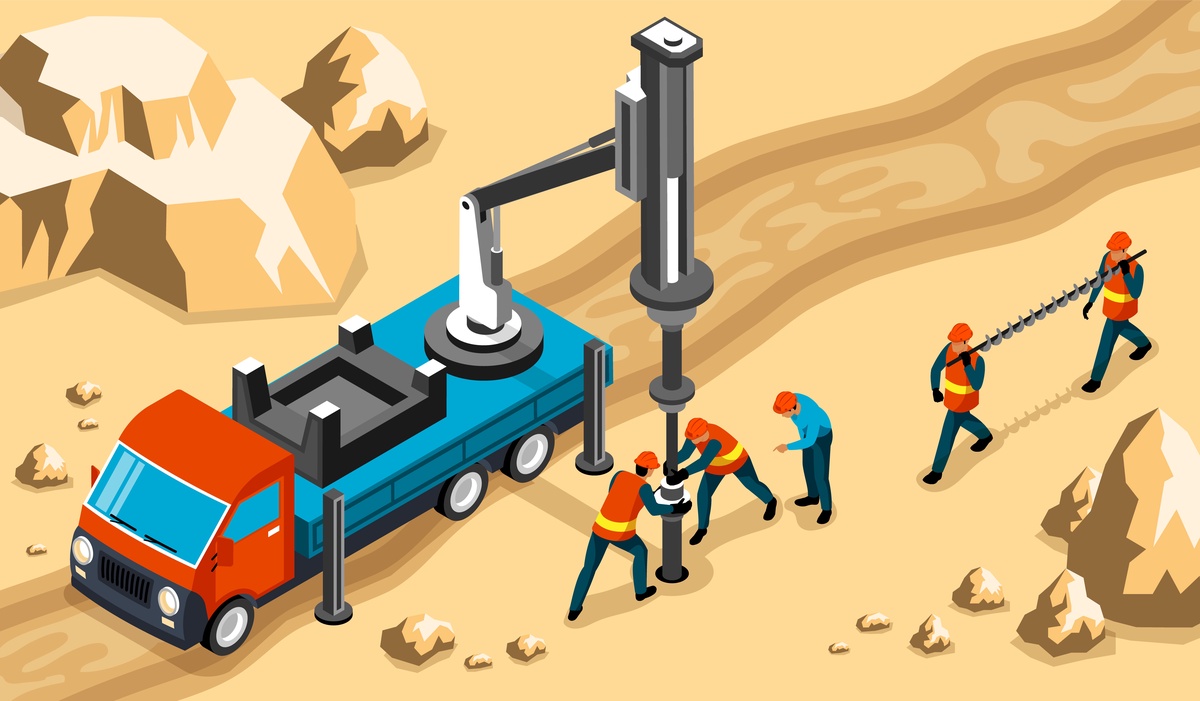For both seasoned professionals and newcomers in the construction industry, comprehending the nuances of concrete core drilling and inverted drilling is essential. These techniques play pivotal roles in contemporary construction projects involving concrete, each offering distinct characteristics, applications, and advantages.
Concrete Core Drilling
Concrete core drilling stands out as a precise method critical for creating circular openings in concrete structures, serving diverse applications such as plumbing and electrical installations. This specialized technique ensures the installation of essential utilities without compromising the structural integrity of buildings.
The Core Drilling Process
- Setting Up: The drilling site is meticulously marked to ensure precision.
- Alignment: The core drill is aligned with these marks, often using a stand for stability in vertical drilling.
- The Drilling Operation: The drill, powered by electricity or hydraulics, penetrates the concrete with a diamond-tipped bit. Water is frequently used to reduce dust and cool the drill bit.
- Extraction: Upon reaching the required depth, the core—a concrete cylinder—is extracted, leaving a neat, circular hole.
Advanced Equipment in Core Drilling
Modern core drilling equipment boasts efficiency and safety enhancements. Some drills feature built-in vacuum pumps for surface adherence, eliminating the need for anchoring. Others minimize vibration, reducing operator fatigue and ensuring smoother cuts. Professionals highlight the importance of choosing the right diamond bit based on the material being drilled and emphasize regular equipment maintenance.
Inverted Drilling
Inverted drilling, a less-known but vital technique, involves drilling from beneath, making it indispensable for construction scenarios with limited top access.
Where and Why is Inverted Drilling Used?
Inverted drilling is ideal for projects with limited top access, such as under bridges or confined spaces within buildings. This technique minimizes disruption to surrounding areas and facilitates work in tight or hard-to-reach spaces.
Technical Aspects
In inverted drilling, the drill rig is set up beneath the drilling area, operating upwards with specialized equipment securely anchored to the surface below. This method is particularly useful for gravity-dependent tasks like setting anchors or conduits in ceilings or underpasses.
Safety and Efficiency
Safety is paramount in inverted drilling. Additional safety protocols are often required to secure equipment and prevent structural compromises. In certain scenarios, inverted drilling proves more efficient, allowing work to proceed without significant disruption to activities above.
Innovative Applications
Inverted drilling goes beyond making holes; it exemplifies the construction industry's innovative spirit. From retrofitting older buildings to installing complex infrastructure in crowded urban environments, inverted drilling is a key solution.
Core vs. Inverted Drilling
When faced with concrete projects, choosing between core drilling and inverted drilling is critical. Let's compare these techniques in terms of purpose, precision, equipment, environment, and advantages.
Concrete Core Drilling
- Purpose and Process: Removes a cylinder of concrete for electrical, plumbing, and HVAC installations.
- Precision: Known for precise cuts, suitable for vertical surfaces, ceilings, and confined spaces.
- Equipment: Uses a core drill with a hollow center and diamond cutting edges.
- Environment: Ideal for various surfaces, minimizes dust and debris, preserves structural integrity.
Inverted Drilling
- Purpose and Process: Specialized for hard-to-reach areas or where traditional methods are impractical.
- Technique: Involves drilling upside down, used in overhead or inaccessible areas.
- Equipment: Requires specialized rigs for inverted positions.
- Application: Suited for overhead drilling or where conventional drills can't be used.
Choosing the Right Method
- Assess the Project Requirements: Consider location, structure material, and accessibility.
- Consider the End-Goal: Core drilling for precision; inverted drilling for inaccessible areas.
- Consult with Professionals: Seek advice from drilling experts for project-specific guidance.
Safety and Best Practices in Concrete Core Drilling & Inverted Drilling
Prioritizing safety in concrete core drilling and inverted drilling is crucial for project success and the well-being of everyone involved. Understanding risks, employing essential safety measures, and following best practices are non-negotiable.
Understanding the Risks
- Potential hazards include flying debris and equipment malfunction.
- Risks can be managed with knowledge and precautions.
Essential Safety Measures
- Personal Protective Equipment (PPE): Non-negotiable for eye, head, ear, and hand protection.
- Equipment Inspection: Thoroughly inspect equipment for wear, tear, and proper functioning.
- Securing the Work Area: Use barriers and signs to keep bystanders at a safe distance.
- Proper Handling and Operation: Follow equipment operation guidelines to prevent accidents.
Best Practices for Efficiency and Safety
- Understanding the Material: Adapt drilling approaches to different concrete densities.
- Correct Drill Bit Selection: Choose the right drill bit to avoid inefficiency and damage.
- Regular Maintenance: Ensure equipment efficiency and reduce unexpected malfunctions.
- Staying Alert and Focused: Maintain mental alertness to prevent distractions and accidents.
- Emergency Preparedness: Have an emergency plan, including quick equipment shutdown and first aid supplies.


No comments yet